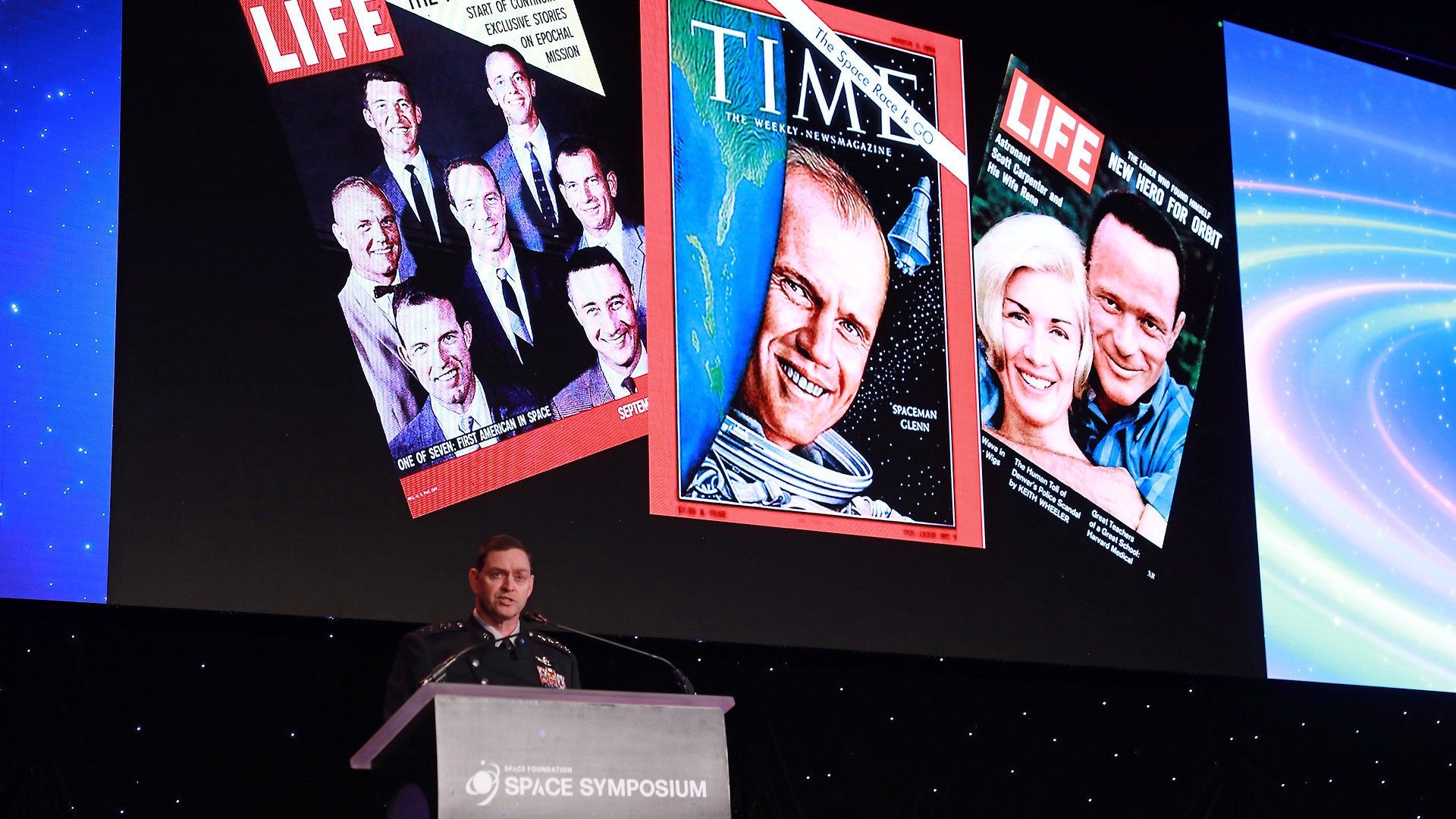COLORADO SPRINGS, Colo. — The U.S. Space Force is leaning more heavily into its allies around the world and unveiling a new International Partnership Strategy, the service’s chief said today.
During a keynote address today (April 9) at the Space Foundation’s 40th annual Space Symposium here, the U.S. Space Force‘s Chief of Space Operations Gen. Chance B. Saltzman said the upcoming strategy document will provide “a starting point for collaboration” and “a roadmap for integrating like-minded nations” to create a safe and cooperative environment in space.
“Space power is the ultimate team sport,” Saltzman said. “The domain is too big, too complex, too dynamic, for a single nation to secure alone.” Trust, coordination and a shared commitment to building a strong space coalition are all key elements of this new strategy, Saltzman added.
Saltzman outlined the three core goals of Space Force’s new International Partnership Strategy, the first of which is “empowering partners as force multipliers”, meaning combining the individual strengths of different nations. While some nations like the United States have robust launch infrastructure already in place, other nations might not — but they may have capabilities or services that the U.S. doesn’t.
Related: What is the U.S. Space Force and what does it do?
“It doesn’t matter if you’re able to build your own constellations or have billions of dollars to invest — if you have an interest in space and a willingness to contribute, we want to work with you,” Saltzman said.
The next goal of Space Force’s new international strategy is to “enhance interoperability and information sharing”, meaning finding ways to link the various intelligence and space surveillance systems (also known as space domain awareness) that different nations including the U.S. might have in place.
“That’s the only way we’re going to support the kind of close collaboration required to keep pace with change in our domain,” Saltzman said.
Lastly, this new strategy aims to achieve “full spectrum integration”, which means aligning different nations’ space operations at every level to have a seamless multination coalition in space. “If we’re not tightly coupled in our training, if we’re not reconciling our operational concepts, if we’re not integrating our capabilities, we will have a very steep learning curve when called upon in crisis or conflict,” Saltzman told attendees today.
One example of this growing international cooperation between Space Force and its partners was first made public this week at Space Symposium. On Tuesday (April 8), Space Force Gen. Stephen N. Whiting, commander of U.S. Space Command, told attendees that the United States and France recently conducted its first-ever bilateral rendezvous and proximity operation to “demonstrate combined capabilities in space in the vicinity of a strategic competitor spacecraft.” No further details were given about the operation.

Space Force isn’t just looking internationally to help it keep space safe; Saltzman also spoke today about the service’s need for increased collaboration with its commercial partners, noting that “the U.S. government is not a natural innovator” when it comes to developing new technologies and capabilities.
“Industry, especially smaller enterprises, can move at a speed the U.S. government cannot match,” Saltzman said. Standing under photos of the Mercury Seven — the United States’ first astronauts, who were announced 66 years ago to this day — the Space Force chief described how quickly American private companies were able to develop all-new hardware for the earliest stages of space exploration.
Even before the Mercury Seven astronauts were selected, NASA reached out to 20 different companies to begin developing a human-rated spacecraft. The first three Mercury spacecraft were built 10 months later. “We would still be impressed by producing a government vehicle, let alone a spacecraft, that quickly” today, Saltzman said.



